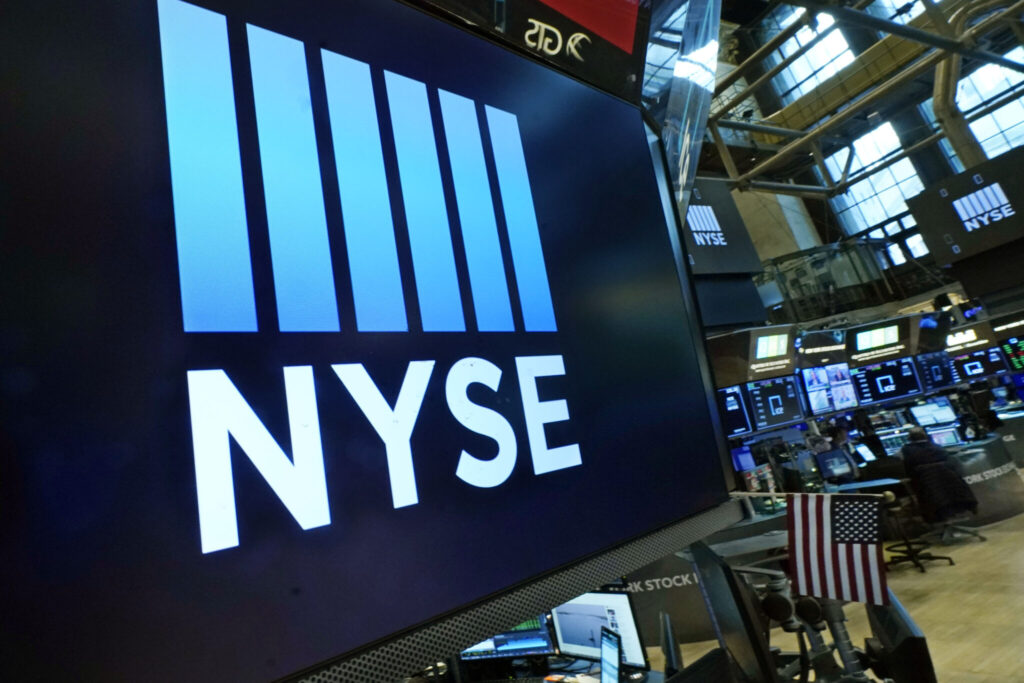Wall Street’s main indexes inched higher on Wednesday as investors parsed earnings reports and comments from Federal Reserve officials for clues on how long the U.S. central bank will keep interest rates high and eventually start cutting it.
Quick Read
- U.S. stocks displayed minimal changes Wednesday, continuing the trend of mixed trading.
- The S&P 500 remained steady, following its strongest week this year after a period of losses.
- The Dow Jones rose slightly by 29 points, or 0.1%, while the Nasdaq dipped by 0.1%.
- Airline stocks like American Airlines, Delta, and United gained due to falling oil prices.
- Warner Brothers Discovery’s stock dropped after reporting a larger-than-expected quarterly loss and losing more streaming subscribers than anticipated.
- As the earnings reporting season ends, most companies have surpassed Wall Street’s profit forecasts, lending some support to the market.
- Market movements are largely influenced by bond yields; the 10-year Treasury yield decreased slightly to 4.55%.
- The Fed’s rate hikes, intended to control inflation, had raised the 10-year yield, but recent signals suggest a pause in increases, calming the market.
- Oil prices have dropped to their July levels, potentially easing inflation concerns and influencing the Fed’s rate decisions.
- U.S. crude fell to $76.08 a barrel, with global economic concerns, especially in China, affecting demand.
- Asian stock markets experienced modest losses, while European stocks saw gains.
- Axon Enterprise and Ralph Lauren reported profits above expectations, seeing their stocks rise.
- eBay shares fell after revenue forecasts for the end of 2023 were lower than expected.
- Rivian Automotive’s stock fluctuated after adjusting its vehicle production forecast and reporting weaker profits.
The associated Press has the story:
Wall Street drifts in mixed trading as oil prices stay weighed down
Newslooks- NEW YORK (AP)
U.S. stocks are still largely stuck in place Wednesday as Wall Street continues to recalibrate following its sharp recent swings.
The S&P 500 was virtually unchanged and on track for a third straight day of quiet, mixed trading. Its movements have become much calmer after the index screamed to its best week of the year last week, which itself came after months of painful losses.
The Dow Jones Industrial Average was up 29 points, or 0.1%, as of 10:45 a.m. Eastern time, and the Nasdaq composite was 0.1% lower.
American Airlines, Delta Air Lines and United Airlines were all flying at least 3% higher at the front of the market as oil prices continue to drop and ease the pressure on fuel costs. Warner Brothers Discovery tumbled 16% after it reported a worse loss for the latest quarter than analysts expected. It also lost more streaming subscribers than forecast.
The reporting season for summertime profits is winding down, and the majority of companies has been topping Wall Street’s forecasts. That’s usually the case, and it’s offered some support for the stock market. But the big driver for stock price movements since the summer has been what yields are doing in the bond market.
The 10-year Treasury yield edged down to 4.55% from 4.57% late Tuesday, helping to impart calm across financial markets.
A swift rise in the 10-year yield that began in the summer had earlier knocked the S&P 500 down by more than 10% from its peak for the year. The 10-year yield briefly topped 5% to reach its highest level since 2007, as it caught up with the Federal Reserve’s main interest rate, which is above 5.25% and at its highest level since 2001.
The Fed has jacked up rates in hopes of slowing the economy and hurting investment prices enough to put downward pressure on inflation and get it back to its 2% goal.
Last week, though, investors took comments from Fed Chair Jerome Powell to indicate the central bank’s hikes to interest rates may be done. He said the summer’s jump in Treasury yields could substitute for further hikes to rates if they remain persistent. That triggered a sharp easing in Treasury yields, which in turn helped stocks to rally.
Now, investors are trying to handicap would could come next. A wide range of outcomes is still possible for the U.S. economy, with the 10-year yield potentially falling as low as 3% if it were to fall into a painful recession, according to Bank of America strategists led by Bruno Braizinha. At the same time, they said the 10-year yield could back above 5% if the economy remains resilient.
A sharp drop in oil prices recently could take some pressure off inflation, which in turn could help the Fed feel more confident about holding rates steady instead of raising them further.
The price for a barrel of U.S. crude oil is back to where it was in July, and it dropped another 1.7% to $76.08. Brent crude, the international standard, fell 1.3% to $80.54.
Oil prices have been tumbling since topping $90 a little more than a month ago. The latest Israel-Hamas war raised concerns about potential disruptions to supplies, which made prices volatile for a while. But worries about demand are still high given faltering economies around the world, particularly in China.
Stock indexes fell 0.2% in Shanghai and 0.6% in Hong Kong, joining modest losses across much of the rest of Asia. Stocks were higher in Europe.
Elsewhere on Wall Street, Axon Enterprise rose 4.3% after the maker of Tasers, body cameras and other equipment reported stronger profit for the latest quarter than analysts forecast.
Ralph Lauren rose 2.9% after reporting stronger profit for the latest quarter than analysts analysts forecast.
eBay sank 5.5% after its forecast for revenue for the last three months of 2023 fell short of analysts’ expectations.
Rivian Automotive swung from an early gain to a loss of 3.9% after the electric vehicle company raised its forecast for how many vehicles it will produce this year and reported weaker profit than expected for the latest quarter.







